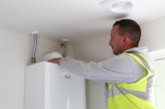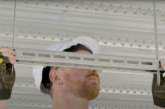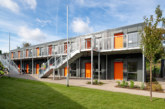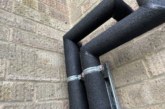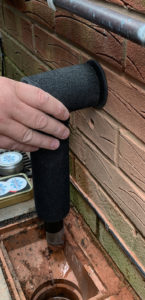 With freezing weather now commonplace in the UK, insulating condensate pipes effectively is more important than ever, as LABM finds out.
With freezing weather now commonplace in the UK, insulating condensate pipes effectively is more important than ever, as LABM finds out.
Frozen condensate pipes account for a substantial amount of boiler breakdowns in colder months. During these times, the number of heating engineer call-outs spike as people struggle to get access to heating and hot water in their home. For local authorities, this can prove an expensive and time-consuming issue to resolve. For their tenants in social housing and other local authority buildings, a boiler breakdown can mean extremely uncomfortable conditions.
The Beast from the East had a significant effect on boiler breakdowns and the heating industry was targeted for criticism in the national press. Longer manufacturer warranties are now being offered with new boilers, but that can also be a major issue if the boiler is not installed to the correct standards. In 2018, thanks to the freezing conditions, thousands of customers found their boilers were not working due to frozen condensates and because they were advised about the manufacturer’s warranty, called them for help. Manufacturers were inundated with calls, which significantly stretched their resources.
According to the Daily Express, on 2nd March 2018, British Gas engineers fixed a record 17,000 broken boilers in a single day and the company saw calls for assistance come at a rate of 104 calls every second — 13 times its usual call volumes. Another national boiler installation company, with over 700 nationwide gas safe engineers, has seen dramatic increases of up to 278% in emergency boiler repair callouts during cold and snowy weather events over the last two years.
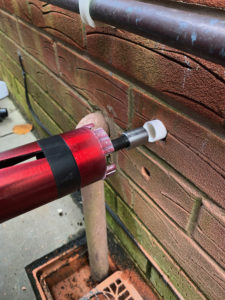 Protection against the elements
Protection against the elements
Since then, and with more extreme winters predicted for the future, the heating industry has been looking at how to further protect against the elements, with effective insulation for condensate pipes a high priority. Dave Smith, a heating and plumbing engineer who built up and sold his own heating company, has developed a solution, Condensate Pro. It is quick and easy to install, looks professional and lasts.
Dave aimed to develop both a product and the tools that allow installers to increase long-term customer satisfaction and boost productivity, save time on installation and limit wasted resources on unnecessary call-outs. Having installed and maintained heating systems for social housing in Sheffield, he has experience of how local authority properties need to be maintained and call-backs kept to a minimum. To develop the most suitable solution, Dave talked to the trade, trialled several designs and carried out on-site tests. After research, investment, and securing the patents, he is confident the Condensate Pro range will help installers reduce the time needed to complete a professional condensate pipe installation in any weather.
Fit for purpose
The solution fits any condensate pipe installation with specially designed UV/water resistant lagging and bond and seal adhesive. All products fit onto 32mm or 21.5mm overflow pipes and the connection and terminations are pre-insulated to make life easier when fitting. The products offer a complete solution for every external termination — gully waste, soakaways, rainwater and soil pipes — making it easy to price the cost of installation.
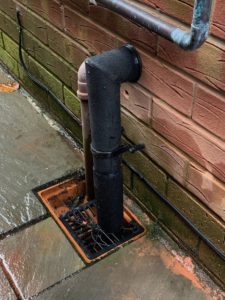 Dave has also manufactured a drift kit and grinder head, to help achieve a clean, faultless fitting on existing installations and uneven masonry. A 76mm grinder head is also available, designed to grind a three-inch flat face against irregular faced stonework, creating a perfect surface for the connection kit.
Dave has also manufactured a drift kit and grinder head, to help achieve a clean, faultless fitting on existing installations and uneven masonry. A 76mm grinder head is also available, designed to grind a three-inch flat face against irregular faced stonework, creating a perfect surface for the connection kit.
“There are millions of boilers fitted with substandard external condensate pipe protection with pipes that freeze easily and cause boiler breakdown, so for the good of the industry our goal is to make external pipe installation and insulation as fast and simple as possible,” says Dave. “We provide installers with professional tools to ensure easy upgrades, replacement boiler installations, or service calls.”
With thanks to Condensate Pro for preparing this article


